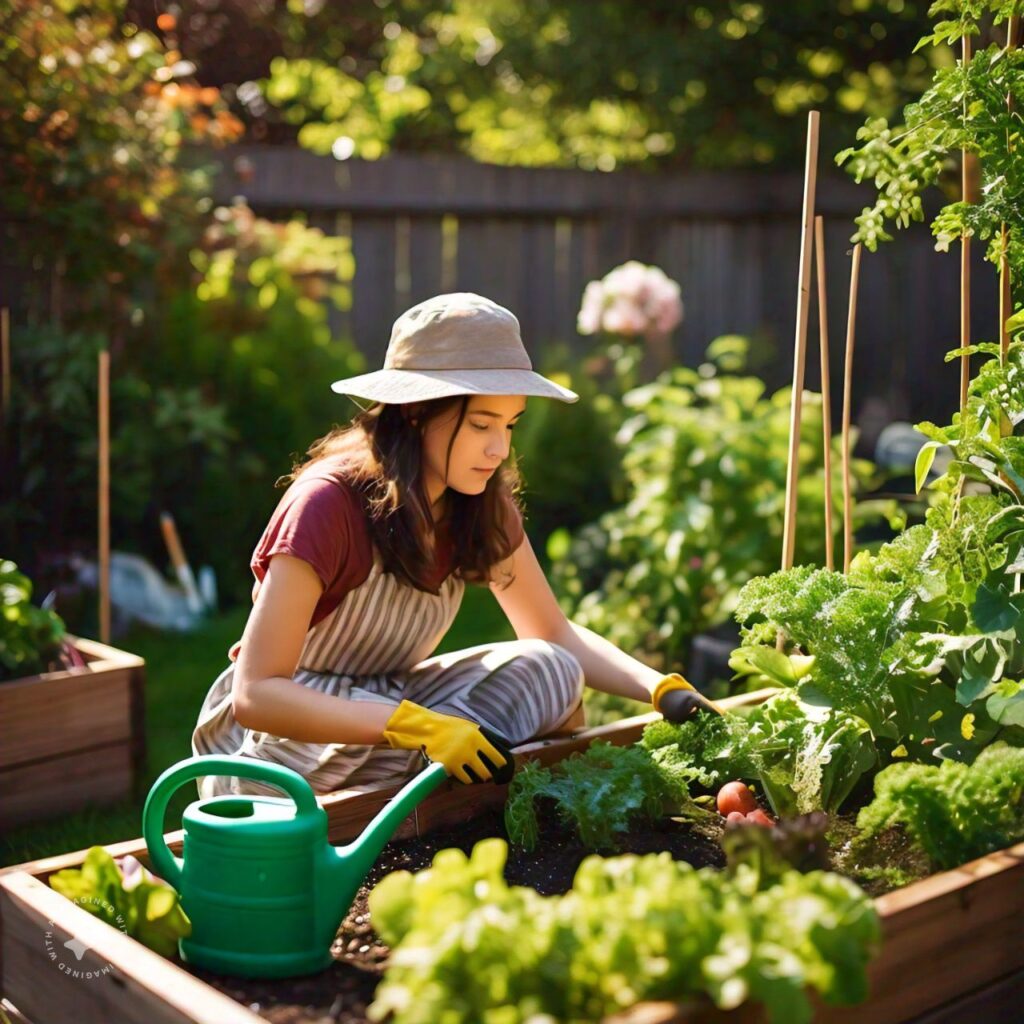Raised-bed gardening is a revolutionary approach to cultivating plants that offers numerous benefits over traditional in-ground gardening. By providing better soil control, superior drainage, and easier access, raised beds allow gardeners to grow healthier plants with less effort. In this comprehensive guide, we’ll cover everything you need to know to start or optimize your raised-bed garden, from building the beds to selecting the right soil and plants. Let’s dive into the details of how raised-bed gardening can transform your growing experience.
What is Raised-Bed Gardening?
Raised-bed gardening involves growing plants in soil beds that are elevated above the ground, typically enclosed in a frame made from materials like wood, stone, or recycled materials. These beds can range in size and height, but they all share the goal of improving plant health, simplifying maintenance, and maximizing growing space.
Why Choose Raised-Bed Gardening?
1. Better Soil Control: In raised-bed gardening, you have complete control over the soil composition. This is particularly important for gardeners with poor native soil or areas where the soil may be compacted or nutrient-deficient. You can tailor the soil mix to the specific needs of your plants, resulting in healthier and more productive crops.
2. Improved Drainage: Raised beds allow excess water to drain away more easily than traditional ground-level gardens. This prevents waterlogged soil, which can lead to root rot and other plant diseases. Good drainage is especially beneficial in areas with heavy rainfall or poorly drained soil.
3. Easier Access: Raised beds are elevated, making them more accessible to gardeners, especially those with limited mobility. You won’t have to bend or kneel as much, reducing strain on your back and knees. This accessibility makes raised-bed gardening a perfect option for older adults or people with physical limitations.
4. Extended Growing Season: Because raised beds warm up more quickly in the spring compared to in-ground beds, you can plant earlier in the season. The soil retains heat longer, which can also extend the growing season into the fall, allowing for multiple harvests.
5. Fewer Weeds and Pests: The confined nature of raised beds makes it easier to control weeds and pests. By placing barriers under the bed and using quality soil, you reduce the chances of weed seeds and soil-borne pests infiltrating your garden.

How to Build a Raised Garden Bed
Step 1: Choose the Location
Selecting the right location is crucial for a successful raised-bed garden. Most plants, especially vegetables, require at least 6-8 hours of direct sunlight per day. Choose a sunny, well-drained spot that’s easy to access.
Step 2: Select the Right Materials
Raised beds can be constructed from a variety of materials, each with its own advantages:
- Wood: The most popular option, wood is affordable and easy to work with. Cedar and redwood are naturally rot-resistant, making them ideal choices.
- Stone or Brick: These materials offer a durable, long-lasting solution but can be more expensive and labor-intensive to install.
- Recycled Materials: Many gardeners opt for eco-friendly options like reclaimed wood, metal, or composite materials.
Step 3: Determine the Size and Height
The size of your raised bed will depend on the available space and the types of plants you wish to grow. A typical raised bed is 4 feet wide by 8 feet long and 12-18 inches high. However, you can customize the dimensions to fit your space and preferences. Make sure the width allows you to reach the center of the bed from both sides.
Step 4: Prepare the Base
To prevent weeds and pests from entering the raised bed, you can lay down a barrier, such as landscape fabric or cardboard, on the ground before adding soil. This barrier should allow for proper drainage while blocking unwanted growth from below.
Step 5: Fill with Quality Soil
One of the key advantages of raised-bed gardening is the ability to control the soil. A good soil mix for raised beds typically includes a combination of:
- Topsoil: Provides structure and basic nutrients.
- Compost: Adds organic matter, improves fertility, and encourages healthy microbial activity.
- Peat Moss or Coconut Coir: Helps with moisture retention while keeping the soil light and airy.
- Perlite or Sand: Enhances drainage and prevents soil compaction.
Mix these components in a ratio of roughly 40% topsoil, 40% compost, and 20% peat moss or perlite for a balanced, nutrient-rich growing medium.

Best Plants for Raised-Bed Gardening
Raised-bed gardening is versatile and suitable for growing a wide variety of plants, including vegetables, herbs, flowers, and even small shrubs. Here are some top plant choices for raised beds:
Vegetables:
- Tomatoes: Raised beds offer the warmth and drainage that tomatoes need to thrive.
- Carrots: Loose soil in raised beds allows for deep root growth, perfect for carrots and other root vegetables.
- Lettuce and Greens: These cool-season crops can be planted early in raised beds, benefiting from the extended growing season.
- Peppers: Like tomatoes, peppers enjoy the warmer, well-drained soil of raised beds.
Herbs:
- Basil: A sun-loving herb that thrives in well-drained soil.
- Thyme: This drought-tolerant herb is perfect for the lower moisture levels of raised beds.
- Parsley: Enjoys the rich, fertile soil you can provide in a raised bed.
Flowers:
- Marigolds: Not only do they add color, but marigolds also help deter pests from vegetable plants.
- Zinnias: These vibrant flowers bloom all summer long and attract pollinators.
- Lavender: Lavender thrives in the well-drained soil of raised beds and adds a fragrant touch to your garden.
Maintaining Your Raised-Bed Garden
To ensure a thriving garden, follow these maintenance tips:
1. Watering
Raised beds tend to dry out faster than in-ground gardens, so consistent watering is essential. Consider using a drip irrigation system or soaker hoses to provide even moisture directly to the roots. Mulching with straw or leaves can also help retain soil moisture.
2. Fertilizing
Since raised beds often use lightweight, fast-draining soil mixes, they may require more frequent fertilization. Use an organic fertilizer like compost or fish emulsion throughout the growing season to replenish nutrients.
3. Mulching and Weed Control
A layer of mulch around your plants will not only help conserve moisture but also suppress weed growth. Hand-pull any weeds that do appear, as the loose soil of raised beds makes it easy to remove them.
4. Seasonal Care
At the end of the growing season, remove any dead plant material and top off the bed with fresh compost to enrich the soil for the next planting cycle. Covering your raised beds with a frost blanket or mulch in the winter can protect the soil and extend the life of your plants.
Conclusion
Raised-bed gardening is an effective and rewarding way to grow plants with less effort and better results. Whether you’re cultivating vegetables, herbs, or flowers, raised beds provide an ideal environment for healthy, productive plants. By following the steps outlined in this guide, you can create and maintain a thriving raised-bed garden that will serve you well for years to come.



